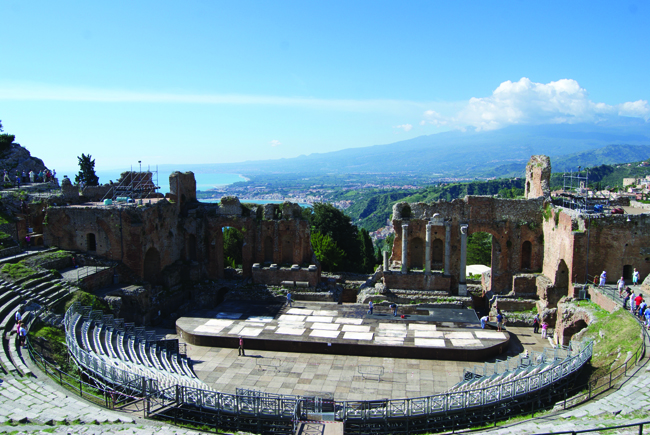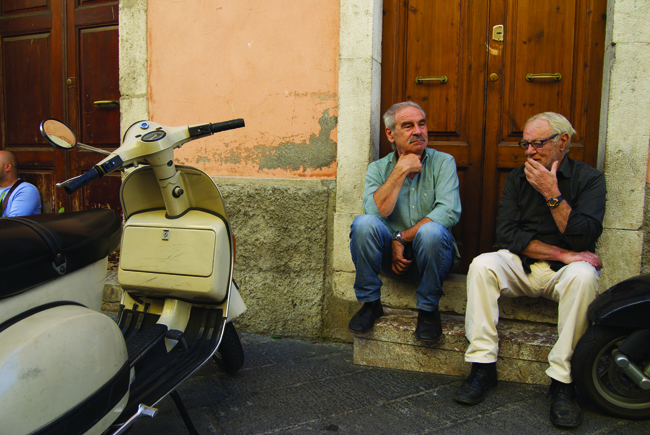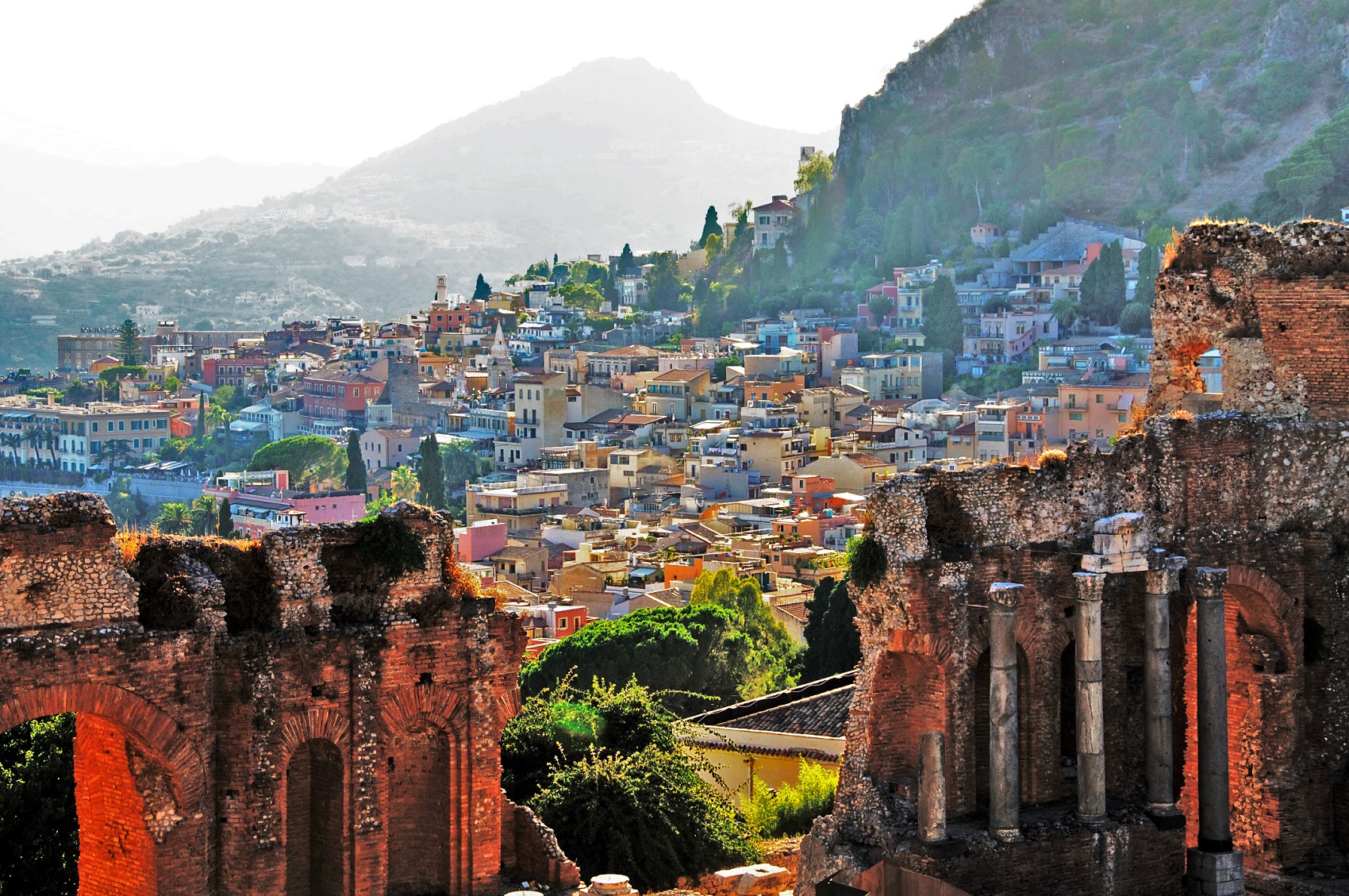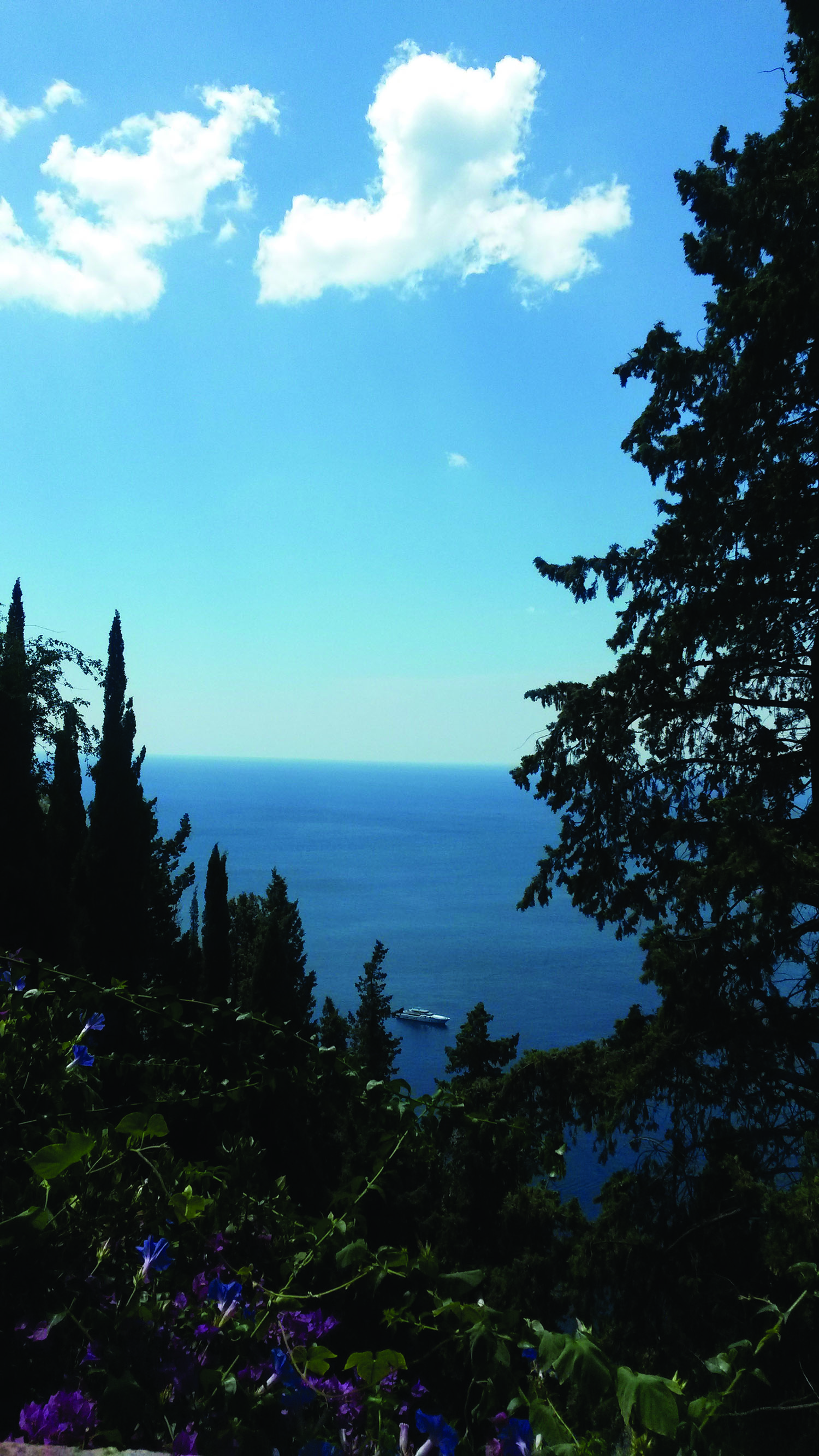Trips are all the sweeter when there’s an unseasonal Arctic blast forecast for the weekend back home. On this gale of Schadenfreude I breezed the three- hour flight from Gatwick to Sicily, landing in the second city of Catania, bang in the middle of the triangular island’s eastern coastline. As I exited the airport, my baggage label fluttered in the balmy breeze. Perfect.
But I wasn’t the only one enjoying the 20°C late-April weather. Despite being one of those hideously early budget flights, the plane had been unnervingly full. With the island’s heady blend of volcano and mafia, sparkling coast and simply perfect seafood, its star is on the rise among Italian destinations. But I was determined to see the main sights while still contriving to score some ‘me time’ with Sicily as well.
Taormina
Taormina is a terrible place to start if you’re trying to avoid the crowds – in the summer, the population swells from 8,000 to 200,000. One of Sicily’s most charming resort towns, tourists have flocked here since the 18th century. The writer D.H. Lawrence lived here while writing much of Lady Chatterley’s Lover (probably something to do with the proximity of a sensitive Englishman to an active volcano). Two hundred feet above sea level, Taormina has commanding views over the Bay of Naxos (and its anchored cruise ships) and the velvety Ionian Sea. Orange trees shade the cracked, cobbled stairways, and locals and tourists window-shop along the upmarket main drag of Corso Umberto.

The Greek Theatre is, literally and figuratively, the town’s crowning glory. A man-made crater in the hill’s peak, it’s a spectacular site of both Greek and Roman significance. It’s also Sicily’s second largest theatre and is still used for spectacular concerts from May through to September.
As my group and our guide arrive through the theatre’s ruined brick arches and into the main stage, we’re greeted by beautiful harmonised singing. A choir of French tourists, practising for a concert in Messina later that day, have taken the stage for an impromptu gig. In the distance, rays of sunlight break over the epic flanks of Mount Etna. Sometimes, other tourists are tolerable.
After my tour, I squeeze past the stalls selling Godfather T-shirts (the backdrop to the movies was filmed around Taormina as Corleone was too built up for Coppola) and amulets carved from igneous rock and make my way to the town centre, the splendid Piazza IX Aprile. Naturally, this chequerboard, café-edged square, sited on a cliff where playful swifts tumble in the updrafts, is a tourist magnet. After acquiring a cup of refreshing lemon granita (a kind of Sicilian sorbet that they also eat for breakfast with brioche) I decide to try to get above the crowds and find my way off Corso Umberto, up peach- coloured alleys and past pine cone- adorned doorways (pine cones bring good luck in Sicily).
Here, the streets are deserted.

I hike up a well-marked zigzag path that leads to the Monte Tauro’s peak, wishing I was wearing something other than flip-flops. Overhead, a strong offshore wind blusters clouds of yellow pollen out of the pines. Half an hour on, I reach the cacti-ed heights. Up here, there’s a superb view of Taormina set elegantly into its hill, as well as of the tourists mobbing Piazza IX Aprile. You’ll find some tranquility up here – and the Santuario Maria della Rocca with its incredible ceiling of rough stone. But even high above town, the happy chatter of the Sunday crowds can be heard, interrupted only by the bells ringing the hour. Perhaps if I was after peace and quiet, I shouldn’t have come to Italy…


